Architect's DIY Beachside Apartment Is a Space-Saving Wonder
Inspired by boats and minimalist design, this small, self-renovated apartment is full of surprises.

Never Too Small
Time and time again, we've seen numerous apartment dwellers around the world prove that smaller living spaces can indeed be beautiful. With a bit of creativity and keeping some small space design principles in mind, tiny city apartments can punch way above their weight by incorporating surprising features like multifunctional or built-in furniture, or sliding partitions to make spaces more flexible.
Inspired by the efficient use of space in boat design, Australian architect Matt Reynolds of mattr studio redesigned an outdated apartment dating back to the 1970s. Located near the waterfront in Bronte, a suburb of Sydney, the 549-square-foot (51-square-meter) BeâCHâlet is one of 16 units in the building. With its sliding doors and well-placed mirrors, the renovated apartment is a wonder to behold, as we can see in this short tour from Never Too Small:

As Reynold explains, his aim was to revitalize the unit to make it more functional and luminous, using an approach that was inspired by efficient and minimalist design:
"BeâCHâlet employs a full bag of architectural tricks to conceal and reveal, hide and display. My primary influences are Japanese and Scandinavian architecture and interiors, and also the super-efficient use of interiors within yachts and caravans, and the inbuilt joinery that goes into those."
Reynolds, who was taught woodworking by his father, executed the renovation himself, using a workshop space that he carved out in the parking garage below the apartment. To start, Reynolds altered the original layout by removing a wall that separated the kitchen from the entrance hallway, and swapped out the existing bathtub for a shower instead, in order to make room for a laundry area.
Reynold's new conception of the entrance is of a "small art gallery" that can display his favorite art pieces. Additionally, he's transformed the formerly confined space into a place where one can sit down to put on or take off shoes—an idea that was inspired by the traditional Japanese genkan.

Never Too Small
Moreover, Reynolds has ingeniously designed the same bench in the entry hallway to flip open to reveal storage for seasonal items that don't need to be immediately accessible.

Never Too Small
The hallway provides access to both the kitchen and the open plan living-dining area. The latter is really a multifunctional space that can alternate between dining, work, and watching television.
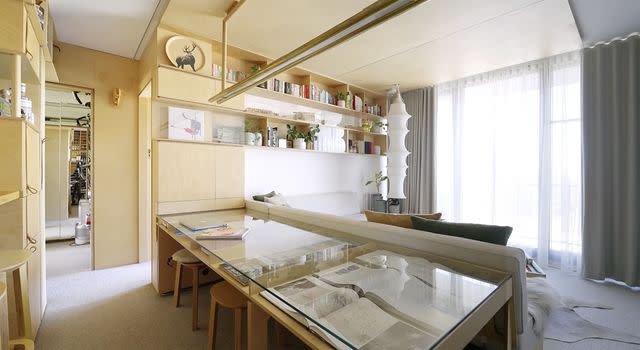
Never Too Small
Here we see the living room in its usual form, with the sofa set up for sitting.

Never Too Small
However, the sofa is designed to break up into modular pieces that roll around, meaning that it can transform into a bed for welcoming an overnight guest.
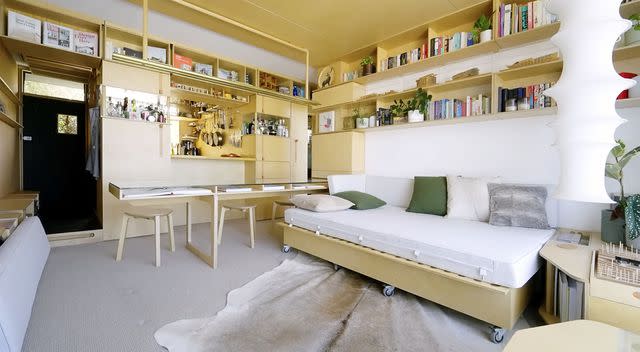
Never Too Small
The table element here is also multipurpose; its glass surface means that it can display Reynold's books of the moment, in addition to serving as a spot to seat up to eight dinner guests, when one of the sofa pieces are moved around.
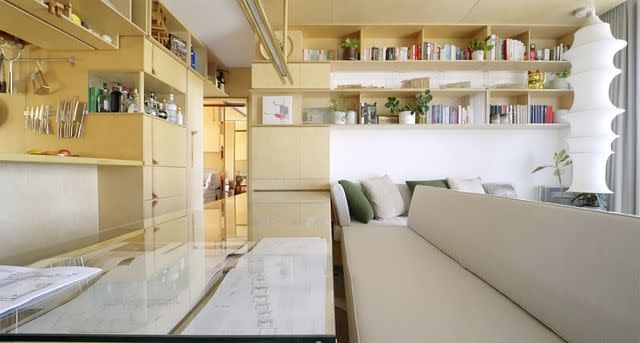
Never Too Small
There is also a built-in charging station for Reynold's devices hidden behind a sliding panel.
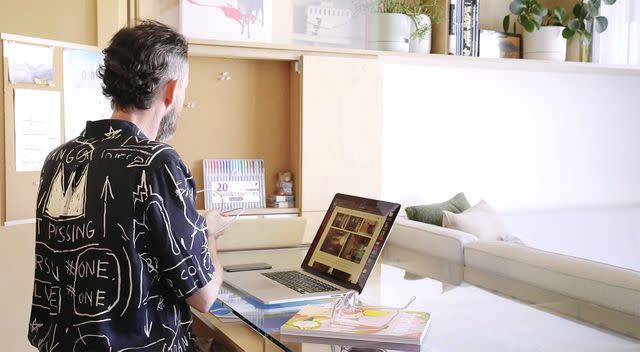
Never Too Small
The wall that runs from the entrance is also full of delightful surprises: there is a wine rack, and a sliver of mirrors and wood that holds books and other items.
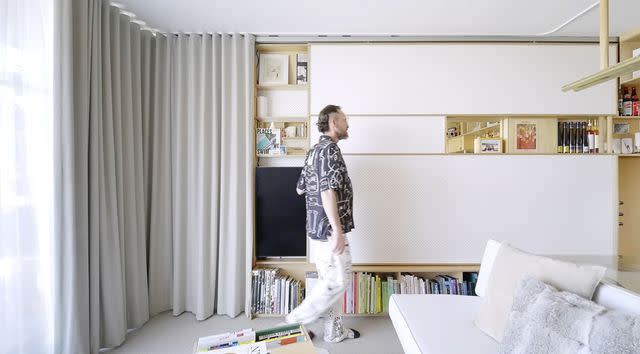
Never Too Small
But once you slide the pegboard panel away, you see yet another unexpected layer of functionalities: there is a television and a mini-gym.
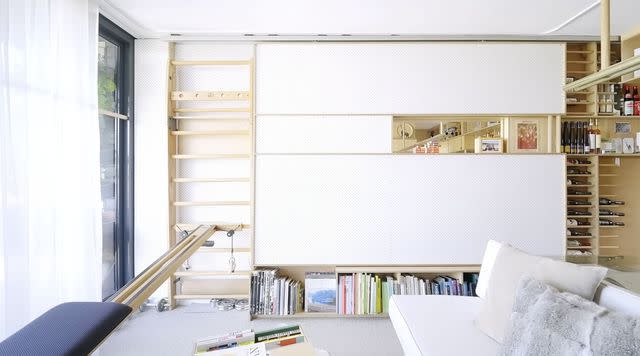
Never Too Small
The kitchen feels simultaneously cozy and modern, with its accents of black Perspex and wood paneling. Storage is maximized with shelves and hooks, while more natural light is brought in with the use of clear Perspex panels over a wine glass cabinet.

Never Too Small
Here's the view through the pass-through counter—there's even more storage here with the built-in bar and magnetic knife holder.
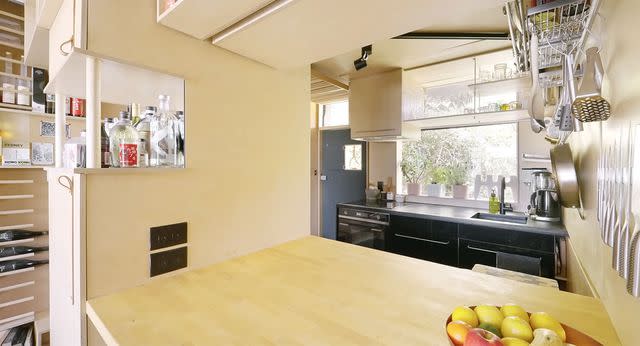
Never Too Small
The primary bedroom feels quite large, and there is plenty of storage space in the built-in wardrobe, which is clad with mirrors to maximize reflected light.
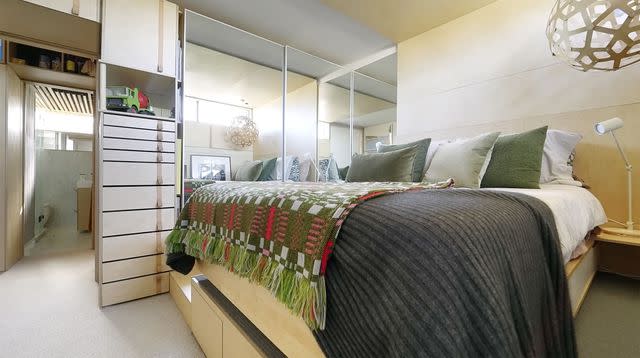
Never Too Small
With the bed being lifted on a platform, it's possible to have even more storage space hidden in drawers that are incorporated underneath.
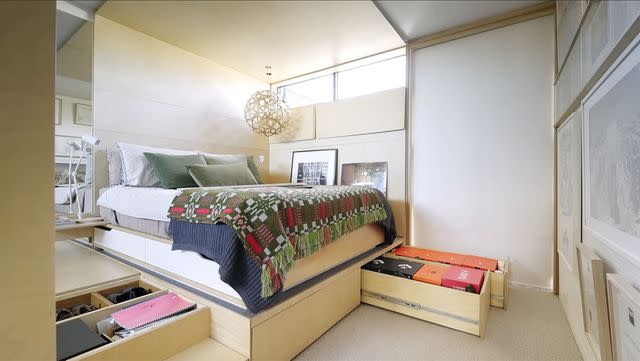
Never Too Small
The second bedroom functions as a home office and enclosed guest room, thanks to the modular sofa pieces that can easily slide out and convert into a small twin or double-sized bed.
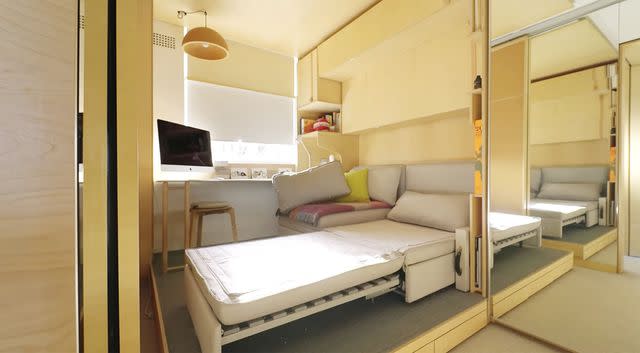
Never Too Small
Reynolds also stores his sports equipment and bikes here. We love how even a few inches of space is not wasted; he has added some shelving and a ledge to store things. Similarly, there is a platform with integrated storage drawers.
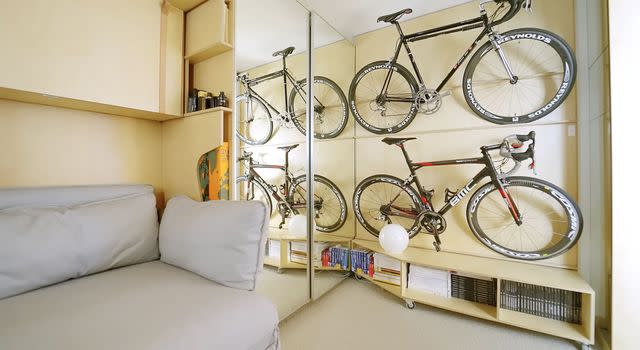
Never Too Small
The bathroom is long in shape, and was reconfigured to swap out the bathtub for a full-sized shower so that Reynolds could install a washer and dryer. Like the rest of the apartment, there are long wooden elements that tie the space together, and lots of mirrors to bounce sunlight around. The wooden ceiling slats are meant to evoke a sauna-like feeling in the space.
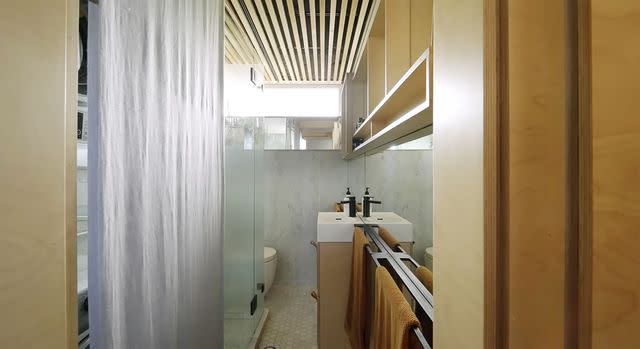
Never Too Small
Reynold's space-saving creativity isn't restricted to only the interior; on the balcony, he has also set up a barbeque nook and a small vertical herb garden.
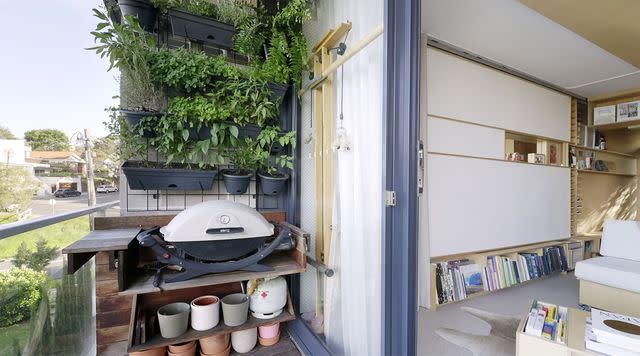
Never Too Small
Instead of building anew and running the risk of generating even more upfront carbon, opting to preserve and reuse an older home by renovating it is likely the greener choice. This is certainly one of the most well-executed DIY home renovations we've ever seen, but Reynolds humbly puts his remarkable personal efforts into the larger picture of collective, long-term sustainability:
"In response to the need to reduce the size of Australian homes, beâCHâlet is an example of smaller, smarter design. We need to reduce the amount of impact on landfill on green open spaces with new development in Australia, and if we can repurpose existing apartment stock, then that's a better use of our built environment."

